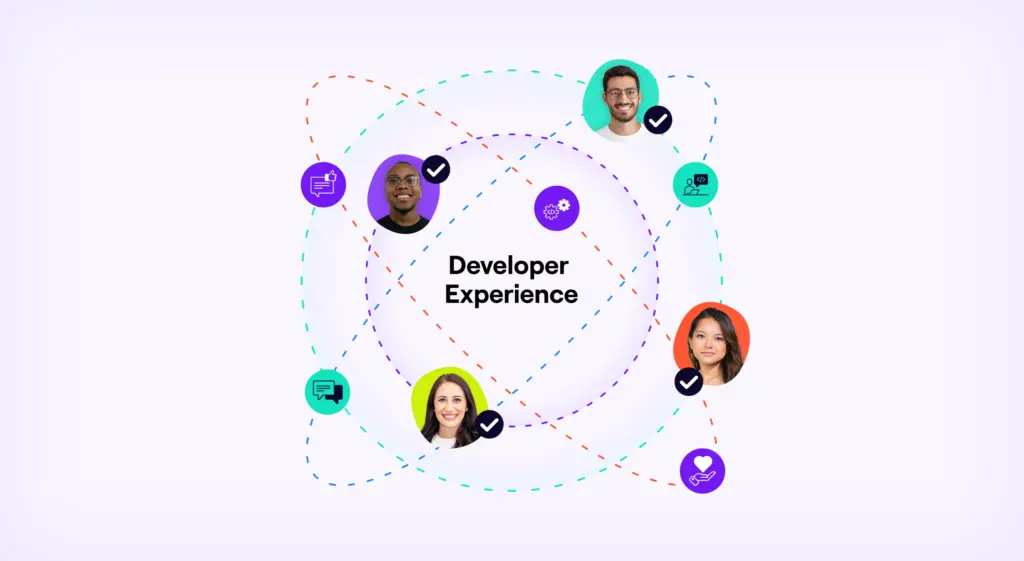Engineering doesn’t take place in a vacuum. The health, satisfaction and well-being of engineering teams have a direct impact on performance and productivity. But in recent years, burnout has become a widely discussed topic among engineers and engineering leaders. The American Psychological Association (APA) defines burnout as physical, emotional, or mental exhaustion accompanied by decreased motivation, lowered performance and negative attitudes towards oneself and others.
Recently, Jellyfish Software Engineering Team Lead Allison Regna took part in a webinar titled Empathy-First Engineering Leadership: Promoting a Culture of Well-Being and Satisfaction. Here are some of the key takeaways from that discussion.
The burnout problem
In 2021, the APA conducted their Work and Well-being Survey of 1,501 adult workers in the United States. That survey found that 79% of respondents reported work-related stress in a 30-day period, while the same percentage reported a lack of interest and decreased motivation.
While burnout isn’t a diagnosed medical condition, its symptoms are recognizable to most people both in and out of the workplace. Employees suffering from burnout may feel like they have a pile of work that never seems to decrease, while that feeling of being overwhelmed can lead them to have less energy for their usual interests or hobbies.
How engineering teams can address burnout
Tackling burnout on an individual or team level can feel insurmountable. Engineering leaders should focus on two approaches to reduce the effects of burnout in the short term and improve the overall situation in the long term: fostering a value-driven culture and using data to detect and address problems before they turn into crises.
Fostering a value-driven culture
Empathy should be at the core of any value-driven culture. This goes just beyond supporting someone’s feelings when they’re excited or upset; empathy is something that can be practiced with intentional actions on a daily basis:
- Psychological safety: Employees need a feeling of psychological safety in order to thrive and succeed in their work environment. Engineering leaders can encourage specific practices to promote psychological safety and positive workplace interactions. These actions can be as simple as encouraging days off for mental health, blocking off time for no meetings, and letting others know when you’re not feeling well. Leaders should also be aware of each team member’s comfort level around speaking up in meetings — breakout rooms and verbal affirmations can allow engineers to feel more comfortable sharing their thoughts and ideas in the future.
- Sense of belonging: It can become extremely difficult for engineers to learn and grow if they feel like they’re not part of the team. Leaders should do everything they can to ensure team members feel included in all discussions and activities. Blind spots can be frequent here, so engineering leaders should be willing to ask team members or executive peers if they’re promoting a welcoming environment. Sometimes outside insights are necessary to catch problems before they spread.
- Showing appreciation: It’s time to give engineers the recognition they deserve on a consistent basis. Leaders can start by sharing context on how individual tasks support the team and higher-level business objectives. This shift provides every task an innate level of value and gives engineers a stronger sense of purpose for completing the work.
Using data with context
Establishing a culture of empathy and healthy practices aren’t the only way to tackle burnout. Key indicators within engineering management platforms (EMPs) can also provide engineering leaders with insights into when their employees might be heading in the wrong direction.
Before diving in, a few caveats:
- There is no single metric that can detect burnout without context
- The data sourced from an EMP shouldn’t be used to micromanage employees
- Quantitative insights need qualitative nuance to be reliable
Skillsoft, a SaaS company that delivers online training solutions for employee development, used Jellyfish data to boost employee morale and drive career growth. Jellyfish provides the company with a baseline of metrics to inform leadership and decision-making, helping them to quantify team health and performance.
“We look at each team individually to assess the overall team dynamic which has a massive impact on satisfaction, performance, and velocity,” said Kristen Maguire, Director of Program Management at Skillsoft. “Jellyfish acts as a gut check to conceptualize team health. Some teams might be doing well with only a few initiatives while others are stretched too thin.”
To learn more about how Skillsoft uses Jellyfish to inform decision-making around team health, check out the full case study.
“We use benchmarking to look at different teams within Skillsoft. Jellyfish data helps us make sense of how and why our engineering teams operate differently,” said Maguire.
Why engineering organizations should prioritize team health
The need for team health is obvious for engineering organizations. When an individual employee is motivated and feels psychologically safe, and when the team practices empathy and healthy communication, they’re more likely to be efficient and productive in their work. An employee who feels comfortable speaking their mind is more likely to suggest a new, innovative idea. Team health adds up to stronger results.
New approaches and strategies for team health emerge on a regular basis, and no solution will be a perfect fit for every organization. By using these suggestions as a starting point, and by rooting your strategies in data, you can begin making precise changes that improve the health of your engineering team.







